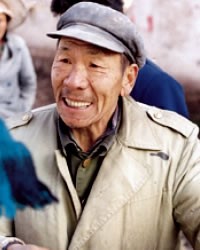Han Chinese, Min Nan in Philippines

Photo Source:
Asia Harvest-Operation Myanmar
|
Send Joshua Project a map of this people group.
|
| People Name: | Han Chinese, Min Nan |
| Country: | Philippines |
| 10/40 Window: | No |
| Population: | 1,254,000 |
| World Population: | 43,504,500 |
| Primary Language: | Chinese, Min Nan |
| Primary Religion: | Christianity |
| Christian Adherents: | 83.00 % |
| Evangelicals: | 6.00 % |
| Scripture: | Complete Bible |
| Ministry Resources: | Yes |
| Jesus Film: | Yes |
| Audio Recordings: | Yes |
| People Cluster: | Chinese |
| Affinity Bloc: | East Asian Peoples |
| Progress Level: |
|
Introduction / History
The Min Nan language is also called Hokkien. It is primarily spoken along China's eastern and southern coasts, Hong Kong, Thailand, and especially in Taiwan. Their language came from a tenth-century kingdom based in Fujian, now a province of China.
Min Nan speakers are among the Han Chinese, the largest ethnic group worldwide. They are the majority in China, but there is a Chinese diaspora in most nations of the world.
The Han Chinese began fleeing to other countries in 1276 after the Mongol invasion. Many other upheavals and conflicts followed, and the Chinese continued to settle in other nations, particularly in Southeast Asia. The seafaring Min Nan speakers have settled in many places where they can trade and do business. This is especially true of the Philippines, an island nation with a large Chinese population. In the Philippines, the Chinese are called Sangley," from a Min word for “those who trade.”
They were noted for their wealthy businesses and the organized crime that protected them. There were also a large number of ethnic Chinese who came to the Philippines as cheap labor.
What Are Their Lives Like?
All Chinese people, including the Min Nan speakers, have many who have integrated into Filipino society. There has been much intermarriage between the two ethnic groups. The Philippines has had presidents who have Chinese blood.
The Min Nan Chinese are usually involved in businesses, either large or small.
What Are Their Beliefs?
Most Min Nan Chinese have generally maintained traditional Chinese religion. Over time these traditional religious beliefs added elements of Buddhism, Confucianism and Taoism. These beliefs are centered around the concept of maintaining harmony, something greatly valued by all Chinese people.
The Min Nam Chinese consult horoscopes in an attempt to determine what course of action will promote harmony and bring good luck. They also believe in a pantheon of spirits who inhabit the earth. The spirits of their ancestors supposedly roam the earth, and if treated properly they will bring good luck. Ghosts are the spirits of people who are angry at the circumstances of their death; they are malicious and capricious. By contrast, deities are the souls of people who lived virtuous lives. They have spiritual powers that can be used to benefit those who worship them. Although the Min Nam Chinese claim adherence to these beliefs, they seem to have little effect on their everyday lives. Many are non-religious in their daily practices.
In the Philippines, a majority of the Min Nan speakers are Christian, usually Roman Catholic. In the Philippines, the Roman Catholic Church has traditionally tolerated traditional religion to blend with their doctrines.
What Are Their Needs?
A large number of Min Nan speakers in the Philippines need to put all their trust in Jesus Christ.
Prayer Points
Pray for Min Nan workers, filled with the fruit of the Holy Spirit, to disciple others in the ways of Christ.
Pray for Min Nan speakers to begin a family-based movement to Christ that will bless them abundantly.
Pray for Min Nan speakers to have the spiritual hunger to seek and find Jesus Christ.